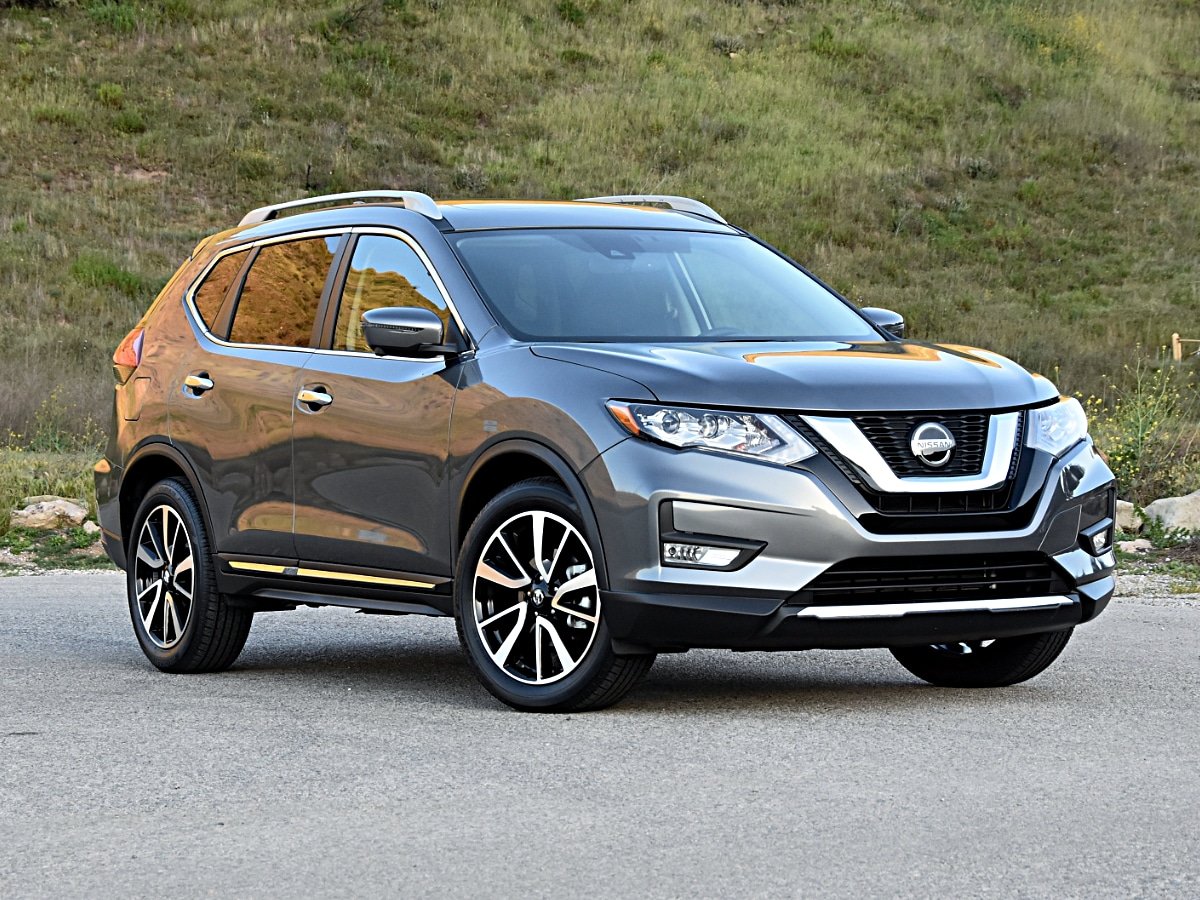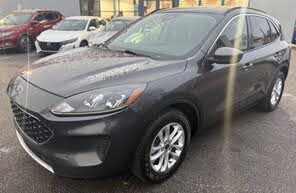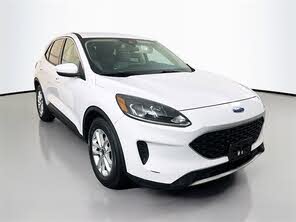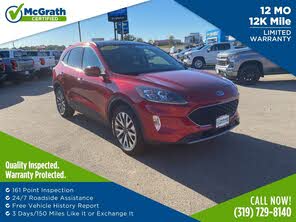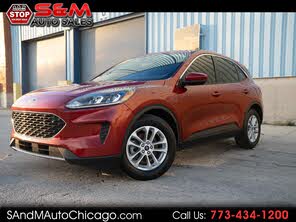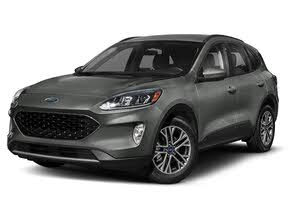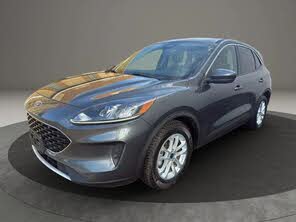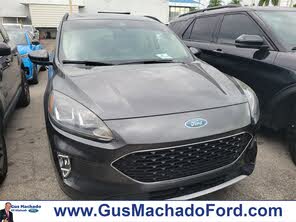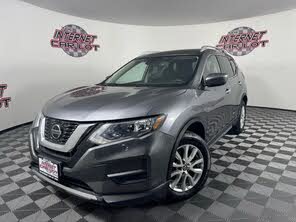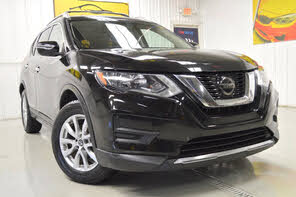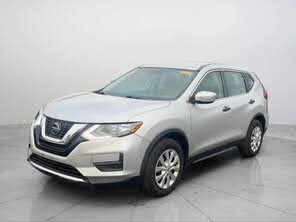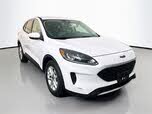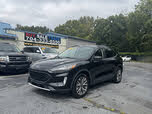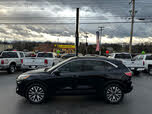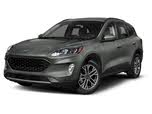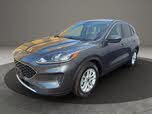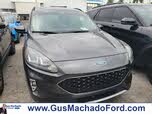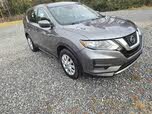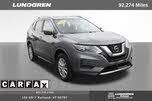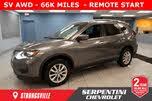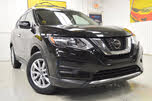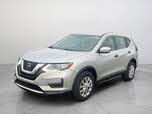2020 Ford Escape vs 2020 Nissan Rogue
Overview | |
MSRP$24,885 | MSRP$25,490 |
Listings1825 | Listings1118 |
Ratings & Reviews | |
User Reviews | User Reviews |
Expert reviews8.0 out of 10 | Expert reviews6.0 out of 10 |
Pros
Cons
| Pros
Cons
|
2020 Ford Escape Reviews SummaryIn case you didn’t hear, Ford came out with an electric crossover, calling it the Mustang Mach-E. Ford could have called it something else, but the marketing department decided to leverage the famous Mustang name to capture headlines and, hopefully, shoppers. What should not be overlooked is the fact Ford chose to make its first-ever standalone electric vehicle a crossover. This choice is a testament to how far the sport utility vehicle has come. Paired with Ford's decision to phase out sedans and hatchbacks, it's clear the company is putting all of its eggs into its trucks, SUVs, and crossovers. Suffice it to say, there is just a bit of pressure on the redesigned 2020 Ford Escape. While the Escape has been around since 2000, it came into its own in 2013 when the “One Ford” philosophy was adopted, meaning that vehicles would be sold in multiple markets around the globe. As a result, the U.S. got Europe’s Ford Kuga, rebranded as the Escape—a high-tech, handsome, and surprisingly athletic small SUV. So, with all this mind, the new Escape needs to not only be an improvement over the previous generation to compete against the rest of the compact crossover segment, it also needs to win over would-be sedan and hatchback customers. Can the 2020 Escape rise to the occasion? | |
2020 Nissan Rogue Reviews SummaryNissan hasn’t redesigned the Rogue since 2014, but an all-new version of this SUV is coming for the 2021 model year. In the meantime, dealers will be eager to sell remaining stocks of the outgoing 2020 Nissan Rogue, and the deals on these new cars ought to be mighty juicy. Should you bite? Should you wait? Or should you shop for something else? The answers to these questions depend on who you are and what you value in a compact crossover SUV. | |
No video found | |
Popular Features & Specs | |
Engine1.5L 181 hp I3 | Engine2.5L 170 hp I4 |
Drive TrainFWD | Drive TrainFWD |
Seating Capacity5 | Seating Capacity5 |
Horsepower | Horsepower170 hp @ 6000 rpm |
MPG City27 | MPG City26 |
MPG Highway33 | MPG Highway33 |
Engine | |
Engine Name1.5L 181 hp I3 | Engine Name2.5L 170 hp I4 |
Torque | Torque175 lb-ft @ 4400 rpm |
Horsepower | Horsepower170 hp @ 6000 rpm |
DrivetrainFWD | DrivetrainFWD |
Fuel Economy | |
MPG City27 | MPG City26 |
MPG Highway33 | MPG Highway33 |
Interior | |
Seating Capacity5 | Seating Capacity5 |
Safety | |
Front Crash Overall5 | Front Crash Overall4 |
Side Crash Overall5 | Side Crash Overall5 |
Dimensions & Capacity | |
Cargo Space37.5 cu ft | Cargo Space39.3 cu ft |
Curb Weight3299 lbs | Curb Weight3463 lbs |
Height66.1 in | Height66.3 in |
Length180.5 in | Length184.5 in |
Width85.6 in | Width72.4 in |
Wheelbase106.7 in | Wheelbase106.5 in |
Maximum Payload | Maximum Payload1127 lbs |
Number of doors4 | Number of doors4 |
Overview | ||
MSRP | $24,885 | $25,490 |
Listings | ||
Ratings & Reviews | ||
User reviews | ||
Expert reviews | 8.0 out of 10Read full review | 6.0 out of 10Read full review |
Pros & cons | Pros
Cons
| Pros
Cons
|
Summary | In case you didn’t hear, Ford came out with an electric crossover, calling it the Mustang Mach-E. Ford could have called it something else, but the marketing department decided to leverage the famous Mustang name to capture headlines and, hopefully, shoppers. What should not be overlooked is the fact Ford chose to make its first-ever standalone electric vehicle a crossover. This choice is a testament to how far the sport utility vehicle has come. Paired with Ford's decision to phase out sedans and hatchbacks, it's clear the company is putting all of its eggs into its trucks, SUVs, and crossovers. Suffice it to say, there is just a bit of pressure on the redesigned 2020 Ford Escape. While the Escape has been around since 2000, it came into its own in 2013 when the “One Ford” philosophy was adopted, meaning that vehicles would be sold in multiple markets around the globe. As a result, the U.S. got Europe’s Ford Kuga, rebranded as the Escape—a high-tech, handsome, and surprisingly athletic small SUV. So, with all this mind, the new Escape needs to not only be an improvement over the previous generation to compete against the rest of the compact crossover segment, it also needs to win over would-be sedan and hatchback customers. Can the 2020 Escape rise to the occasion? | Nissan hasn’t redesigned the Rogue since 2014, but an all-new version of this SUV is coming for the 2021 model year. In the meantime, dealers will be eager to sell remaining stocks of the outgoing 2020 Nissan Rogue, and the deals on these new cars ought to be mighty juicy. Should you bite? Should you wait? Or should you shop for something else? The answers to these questions depend on who you are and what you value in a compact crossover SUV. |
Video | No video found | |
Popular Features & Specs | ||
Engine | 1.5L 181 hp I3 | 2.5L 170 hp I4 |
Drive Train | FWD | FWD |
Seating Capacity | 5 | 5 |
Horsepower | 170 hp @ 6000 rpm | |
MPG City | 27 | 26 |
MPG Highway | 33 | 33 |
Engine | ||
Engine Name | 1.5L 181 hp I3 | 2.5L 170 hp I4 |
Torque | 175 lb-ft @ 4400 rpm | |
Horsepower | 170 hp @ 6000 rpm | |
Drivetrain | FWD | FWD |
Fuel Economy | ||
MPG City | 27 | 26 |
MPG Highway | 33 | 33 |
Interior | ||
Seating Capacity | 5 | 5 |
Safety | ||
Front Crash Overall | 5 | 4 |
Side Crash Overall | 5 | 5 |
Dimensions & Capacity | ||
Cargo Space | 37.5 cu ft | 39.3 cu ft |
Curb Weight | 3299 lbs | 3463 lbs |
Height | 66.1 in | 66.3 in |
Length | 180.5 in | 184.5 in |
Width | 85.6 in | 72.4 in |
Wheelbase | 106.7 in | 106.5 in |
Maximum Payload | 1127 lbs | |
Number of doors | 4 | 4 |
The 2020 Ford Escape was recognized as an attractive compact crossover with a sleek and modern design. Its large grille mirrored those found on the outgoing Fiesta and Focus hatchbacks, while the headlights drew inspiration from the Ford GT supercar. Despite adopting a more curvaceous design than its previous, more upright model, the Escape maintained its status as one of the best-looking small SUVs, only surpassed by the Mazda CX-5 and Jeep Cherokee.
Inside, the Ford Escape boasted a modern and practical cabin design. Users would find a fully digital instrument panel, a floating infotainment screen, and a thoughtfully arranged layout of basic controls. Several trims were offered: S, SE, SE Sport, SEL, and Titanium. The base S trim featured 17-inch steel wheels, manual front seats, Sync infotainment with a 4.2-inch screen, and a full suite of driver-assistance features.
The SE trim added painted aluminum wheels, automatic climate control, heated front seats, and a 10-way power driver's seat, while swapping the infotainment screen for an 8-inch Sync 3 system with Apple CarPlay and Android Auto. The SE Sport trim enhanced the exterior with sporty touches and incorporated a 12.3-inch digital instrument panel and a hybrid powertrain. The SEL trim introduced fog lamps, 18-inch wheels, and a power liftgate, alongside upgraded interior amenities.
The top-tier Titanium trim impressed with unique 19-inch wheels, LED fog lamps, a dual-panel moonroof, and a luxurious two-tone leather interior. It also came equipped with a premium B&O audio system and additional comfort features. CarGurus recommended the SE trim for its excellent balance of features and value.
In contrast, the 2020 Nissan Rogue, while still attractive, showed its age in design elements. Its bold V-motion grille and exaggerated fender swells provided visual appeal, especially with the SL's 19-inch aluminum wheels. However, the interior design fell short of modern expectations. The waterfall control panel and rounded forms felt dated compared to the wide, horizontal themes found in newer models. Additionally, the plastic surfaces inside were not impressive.
Despite these shortcomings, the Rogue SL did offer practical features like padded console sides for drivers' comfort. Overall, while the Rogue had a pleasing enough exterior, its older interior styling and materials detracted from its overall appeal.











The 2020 Ford Escape offered an array of four engine options, providing versatile powertrain choices for various driving preferences. The standard engine in the S, SE, and SEL trims was a new 3-cylinder engine that produced 180 horsepower and 177 pound-feet of torque. More powerful options included a 2.0-liter turbocharged 4-cylinder engine available in the SEL and standard on the Titanium trim, delivering an impressive 250 horsepower and 275 pound-feet of torque for robust acceleration.
The Escape also featured hybrid variants, including a 2.5-liter 4-cylinder engine coupled with a battery pack and electric power, making 198 horsepower. This hybrid powertrain was standard on the SE Sport and available on the Titanium. Additionally, a plug-in hybrid option was offered on the SE, SEL, and Titanium trims. The conventional engines used an 8-speed automatic transmission, while the hybrid models utilized a continuously variable transmission (CVT).
The 2.0-liter turbocharged engine in the Titanium trim provided plenty of power both in city driving and on the highway, with responsive steering and strong brakes enhancing the driving experience. The Escape demonstrated athletic handling, which set it apart from many competitors in the small SUV segment. Fuel efficiency varied by engine, with the most economical being the non-Sport hybrid achieving 41 mpg combined.
Conversely, the 2020 Nissan Rogue came with a single engine option: a 170-horsepower 2.5-liter 4-cylinder paired with a CVT. This combination was merely adequate, particularly given the Rogue's weight. While the CVT managed the engine’s power effectively during regular driving, the Rogue struggled during acceleration, overtaking, or climbing hills, providing noise rather than the needed power.
Despite its lackluster performance, the Rogue excelled in ride and handling due to technologies such as Intelligent Trace Control and Active Ride Control. These features helped tighten turns and smooth out bumps, but the Rogue still lacked the agility and fun-to-drive factor of the Escape. Additionally, the Rogue's fuel efficiency did not live up to its EPA rating of 29 mpg combined, achieving only 24.9 mpg during testing.
The 2020 Ford Escape's sleek design came at a cost to cargo space. It offered 37.5 cubic feet of cargo space behind the second row, which dropped to 34.4 cubic feet in the hybrid models. With the backseat folded down, the Escape provided 65.4 cubic feet, or 60.8 cubic feet in higher trims. This was a reduction from the previous model and less than competitors such as the Honda CR-V and Subaru Forester, which offered approximately 75 cubic feet. However, the Escape prioritized passenger space, with ample headroom and legroom for second-row passengers and a confident, high-seating position for the driver and front passenger. Additionally, the cabin featured numerous compartments and storage solutions, making it practical for daily use.
The 2020 Nissan Rogue, in contrast, struggled to provide a comfortable driving position for taller individuals due to its limited seat height adjustment. However, the rear seat accommodations were more favorable, with stadium-style seating offering excellent thigh support and good visibility, especially with the optional panoramic glass sunroof. Rear passengers benefited from rear air conditioning vents and USB charging ports.
In terms of cargo space, the Rogue excelled with 39 cubic feet behind the back seat, beating the Ford Escape and Mazda CX-5. The Rogue also featured underfloor storage and a versatile Divide-n-Hide cargo management system, which added to its functional appeal.
The 2020 Ford Escape offered varying degrees of technology depending on the trim level. The base S trim featured a small 4.2-inch audio screen, which looked out of place in a modern vehicle. Upgrading to the SE trim introduced an 8-inch Sync 3 system, which provided a significantly better experience with Android Auto and Apple CarPlay integration. The latest Sync interface allowed for multitasking on the screen, enhancing usability. The Titanium trim boasted additional features such as a head-up display, though its flip-up screen design limited its effectiveness for taller drivers.
The 2020 Nissan Rogue came standard with Bluetooth, Apple CarPlay, Android Auto, and a hands-free text messaging assistant across all trims. Higher trims added SiriusXM satellite radio, navigation, and a Bose sound system. NissanConnect Services offered services like remote engine starting and door lock operation, Amazon Alexa and Google Assistant integration, automatic collision notification, and safe teen driver settings. Despite this array of features, the Rogue’s infotainment system used a dated 7-inch touchscreen with slow response times and poor voice recognition, impacting the overall user experience.
The 2020 Ford Escape included comprehensive safety features such as front- and side-impact airbags, a reversing camera, traction control, and a tire-pressure-monitoring system. It had not been tested by the NHTSA but received the highest overall score of Good from the IIHS. The Ford Co-Pilot360 suite of advanced safety systems was standard and included forward-collision warning, lane-keeping assist, adaptive cruise control, automatic high beams, blind-spot monitoring, rear cross-traffic alert, and a driver drowsiness monitor.
Similarly, the 2020 Nissan Rogue offered a robust set of standard safety features, including the Safety Shield 360 suite with forward-collision warning, automatic emergency braking, blind-spot monitoring, rear cross-traffic alert, lane departure warning, and automatic high beams. Additional options included a surround-view camera and ProPilot Assist for adaptive cruise control with lane-centering. Despite these features, the Rogue's aging design showed in its safety ratings, with a 4-star overall rating from the NHTSA and lower ratings from the IIHS due to issues with headlights and front-passenger protection.
CarGurus highlights

According to CarGurus experts, the overall rating for the 2020 Ford Escape is 8.0 out of 10, while the 2020 Nissan Rogue scores 6.5 out of 10. The Ford Escape stands out with its multiple engine options, modern interior, advanced technology, and impressive safety features. The Nissan Rogue excels in rear seat comfort and cargo capacity but struggles with performance and outdated technology. Based on these ratings and comparisons, the Ford Escape is the recommended choice for a more balanced and enjoyable driving experience.
Choose the 2020 Ford Escape if:
- You want a variety of powertrain options, including a powerful turbocharged engine and hybrid variants.
- You prioritize a modern interior design with advanced infotainment features.
- Safety features and a high safety rating are important to you.
Choose the 2020 Nissan Rogue if:
- You need greater cargo capacity and advanced cargo management solutions.
- You value rear-seat comfort, especially for family and passengers.
- You appreciate a comprehensive suite of standard safety features.
CarGurus highlights

According to CarGurus experts, the overall rating for the 2020 Ford Escape is 8.0 out of 10, while the 2020 Nissan Rogue scores 6.5 out of 10. The Ford Escape stands out with its multiple engine options, modern interior, advanced technology, and impressive safety features. The Nissan Rogue excels in rear seat comfort and cargo capacity but struggles with performance and outdated technology. Based on these ratings and comparisons, the Ford Escape is the recommended choice for a more balanced and enjoyable driving experience.
Choose the 2020 Ford Escape if:
Shop Now- You want a variety of powertrain options, including a powerful turbocharged engine and hybrid variants.
- You prioritize a modern interior design with advanced infotainment features.
- Safety features and a high safety rating are important to you.
Choose the 2020 Nissan Rogue if:
Shop Now- You need greater cargo capacity and advanced cargo management solutions.
- You value rear-seat comfort, especially for family and passengers.
- You appreciate a comprehensive suite of standard safety features.

By: CarGurus + AI
At CarGurus, our team of experienced automotive writers remain at the heart of our content operation, conducting hands-on car tests and writing insightful guides that are backed by years of industry experience. To complement this, we are harnessing AI to make our content offering more diverse and more helpful to shoppers than ever. To achieve this, our AI systems are based exclusively on CarGurus content, ratings and data, so that what we produce is both unique to CarGurus, and uniquely helpful to car shoppers.
